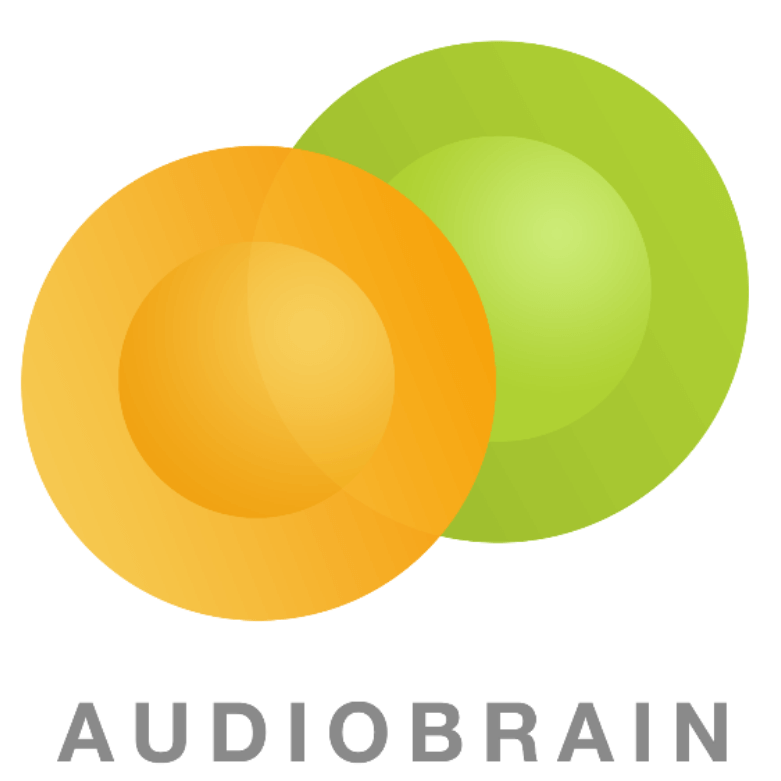sonic LOGOS
WHAT IS A SONIC LOGO?
A sonic logo (sometimes called a sound mark, audio logo, or mnemonic) is a brief audio asset that quickly conveys a brand’s identity. It is often a starting point for more comprehensive sonic branding and tends to accompany a brand’s visual logo or related graphic. A brand’s sonic logo helps to unite its content under one overarching identity in a subtle but meaningful way. A truly effective sonic logo is unique and immediately recognizable to consumers with a tone and timbre that are consistent with the brand’s voice as expressed in marketing and advertising, at events, in product sounds, and other key touchpoints.
It is often comprised of a short musical phrase (2-5 seconds) but can include sound effects, voice, or other sound design elements that express key brand attributes, like the breath element in the iconic sonic logo that Audiobrain developed for the Xbox 360. The breath helps to convey a key attribute of the Xbox 360: that it is a “living, breathing entertainment system.” Sonic logos can be particularly impactful when aligned with visual graphics like this example.
HOW DO BRANDS USE SONIC LOGOS?
Sonic logos can be leveraged to a diverse array of touchpoints to create a strong foundation for a brand’s larger audio identity: in advertising, social media content, podcast & radio content, call centers & IVR systems, interactive platforms, mobile applications, and more.
ADVERTISING
The most common touchpoints for sonic logos are advertisements. Many brands leverage these assets to introduce or end television and radio commercials to effectively frame brand messaging with a reinforcement of the brand’s identity in a way that sticks with consumers and becomes easily recognizable over time.
Schneider Electric and Unify provide excellent examples of this approach. Both brands end their audiovisual advertisements with the sonic logos shown here, each composed by Audiobrain. Both of these audio logos were developed from long-form brand themes composed by Audiobrain in close collaboration with key brand stakeholders.
PRODUCTS
Brands can leverage their sonic logo across other key touchpoints to extract the maximum possible value from this asset. Expanding the use of a sonic logo to other brand communications and interactions helps to shape consumers’ experience of the brand, which ultimately informs brand perception and increases brand recognition.
Sonic logos can be leveraged to products, like the Whirlpool and KitchenAid examples shown here. These marquee sounds double as Power On product sounds and sonic logos, helping to link consumers’ actual experience of Whirlpool and KitchenAid products with the brand’s overarching identity.
PODCASTS & VOICE TECH
Podcasts, flash briefings, and other audio-centric platforms are also effective touchpoints for branded sonic logos. The brief expression of brand identity at the beginning of a podcast episode, for example, helps to prime the listener for the content that follows. Using a sonic logo to end a podcast also effectively reinforces brand identity by linking the episode’s content to the overarching brand. The audio clip from Audiobrain’s collaboration with Bret Kinsella for Voicebot.ai demonstrates how a sonic logo can effectively frame podcast content within a larger brand lens.
Sonic logos can also be leveraged to user experiences through product sounds and other touchpoints in which customers interact directly with a brand. As noted in the Whirlpool and KitchenAid examples above, sonic logos can be effectively linked to user experiences by connecting to or drawing upon product sounds that are commonly heard by users.
CALL CENTERS & IVR SYSTEMS
The Jaybird example here goes further to show how sonic logos, product sounds, and call center audio can be strategically crafted to create a holistic brand experience: Audiobrain successfully leveraged the branded UX sounds and voice prompts we developed for Jaybird earbuds to its call center to ensure a consistent, unified sonic identity.
WHAT ARE SOME OTHER EXAMPLES?
The California State University, Fullerton sonic logo shown here provides another useful example of a sonic logo tied to a brand’s visual graphic. The audio and visual logos work together to create a more cohesive sensory experience than either asset would provide on its own.
The New York Giants examples demonstrate how Audiobrain develops sonic logos as part of a comprehensive sonic identity. We composed the short-form logo in tandem with the long-form in-stadium anthem to ensure consistency and to create musically compatible audio assets that are effective together but also sound great on their own.
CONCLUSION
Sonic logos are valuable branding assets that can be used to enhance a wide variety of touchpoints. They are particularly valuable when tied to a visual graphic and deployed consistently across brand communications. Sonic logos can improve brand perception and recognition over time, particularly when leveraged across various brand interactions. While a well-designed sonic logo is often an effective starting point, it is only one piece of a comprehensive, unified, and effective sonic identity. Audiobrain is a globally recognized leader in sonic branding with over 25 years of experience helping brands find their voice through the development of strategic, differentiating, and ownable sonic identities.



